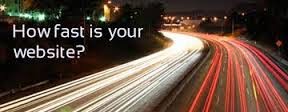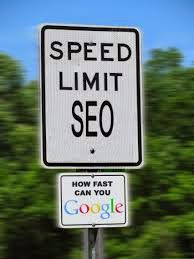Bad Rank on Google? Speed Up Your Website for Better Rank!

It is no secret that Google is now using site speed as one of the ranking factors. Google Webmaster Central Blog made an official announcement on this some years ago:
You may have heard that here at Google we’re obsessed with speed, in our products and on the web. As part of that effort, today we’re including a new signal in our search ranking algorithms: site speed. Site speed reflects how quickly a website responds to web requests…
And, Matt Cutts has repeatedly mentioned about the importance of website speed optimization in his videos and blogs.
Fast Load Time = Better Conversion Rate
I believe that some of you really hate the website with slow loading. Right? Sometimes most of site have bad loading time and that makes customer run. Google also hate that! Page load time not only affects search rankings, it also impacts greatly on conversion rate and visitors reach. In short, please make sure that you have optimized your site.
How to Improve Your Website Speed
 I have interested with SEO for almost 5 years and I keep learning and learning. When I learned it for the first time, I’m very curious why site A has higher rank than site B. The question is “How”. How do we speed up our websites? How do we measure the speed of our website and compare with others? How do we get things done without getting into too much technical details?
I have interested with SEO for almost 5 years and I keep learning and learning. When I learned it for the first time, I’m very curious why site A has higher rank than site B. The question is “How”. How do we speed up our websites? How do we measure the speed of our website and compare with others? How do we get things done without getting into too much technical details?1. Avoid Unnecessary HTTP 300’s, 400’s and 500’s
HTTP 300’s refers to server redirects, HTTP 400’s refers to authentication issues, and HTTP 500’s refers to server errors – all these results for HTTP requests cause unnecessary extra round trips* for the browsers. While certain HTTP 300’s are unavoidable (such as 301 redirection to a new page location), you should look into every HTTP 400’s and 500’s errors and try to fix every one of it.
* What’s A Round Trip Time Anyway?
General speaking, a webpage weights roughly 1,100KB in size and consists of roughly 100 objects a web browser can only request 2 – 6 objects at a time depends on user’s configuration. Round Trip Times is the number of round trip it takes for a browser to open up a page completely. For example, In order to load a webpage with 100 objects, a browser that is configured to carry 5 requests at a time will takes 20 round trips to load the webpage. Since the lesser round trip times it takes, the faster a webpage loads; we should minimize the number of objects available on one page.
2. Use CSS
CSS Sprites refers to the technique where multiple images were combined into one image file and shown parts of it to the users at a time. Using CSS Sprites reduces the number of browsers round trips and hence makes web pages load faster.
3. Avoid Using CSS @import
 CSS @import function helps load external stylesheet to your webpage. The bad thing about this is that it simply adds additional browser round trip times and increase your webpage load time. To solve this, simply use a <link> tag instead.
CSS @import function helps load external stylesheet to your webpage. The bad thing about this is that it simply adds additional browser round trip times and increase your webpage load time. To solve this, simply use a <link> tag instead.In case you are a casual blogger and have no idea what am I talking about, just go have a look on your header.php (if you are using WordPress), ctrl + F and search for ‘@import’, move .css files to the same server if necessary, replace @import lines with <link> instead.
Example, replace
@import url(“../style1.css”);
@import url(“../style2.css”)
To
<link rel=”stylesheet” href=”style1.css”>
<link rel=”stylesheet” href=”style2.css”>
4. Optimize Your Database
If you are on MySQL, things can be done easily on phpMyAdmin. And if you are on WordPress, things can be done even easier with the right plugin. WP Optimize, for example, allows you to clean up your database in just a few clicks.
5. Place Your Scripts at the Footer of Your Site
One easy way to improve your page load time in the view of visitors is to to place codes and scripts (for example, Google Analytics) at the footer whenever is possible. Though I believe it barely helps in term of SEO, doing so will nevertheless makes your website viewers feel that the page is loading in a faster manner – as this allows critical content to load before browsers execute the scripts.
6. Keep Update Your Blog/Site
Google like an update site. So, please keep update your site and the google robot will crawl your site.
7. Pick a Good Hosting Provider
If you’re serious to make your site faster, make sure you choose the right hosting provider. If your have optimized your site, but the server is very slow, your site will get the impact too. In short, you’ll get what you pay for. I would recommend you to use ASPHostPortal.comfor your ASP.NET site.
More Tips about SEO
Hope you like my article above. I’m sure you are really interested on other SEO tips. Please just check: